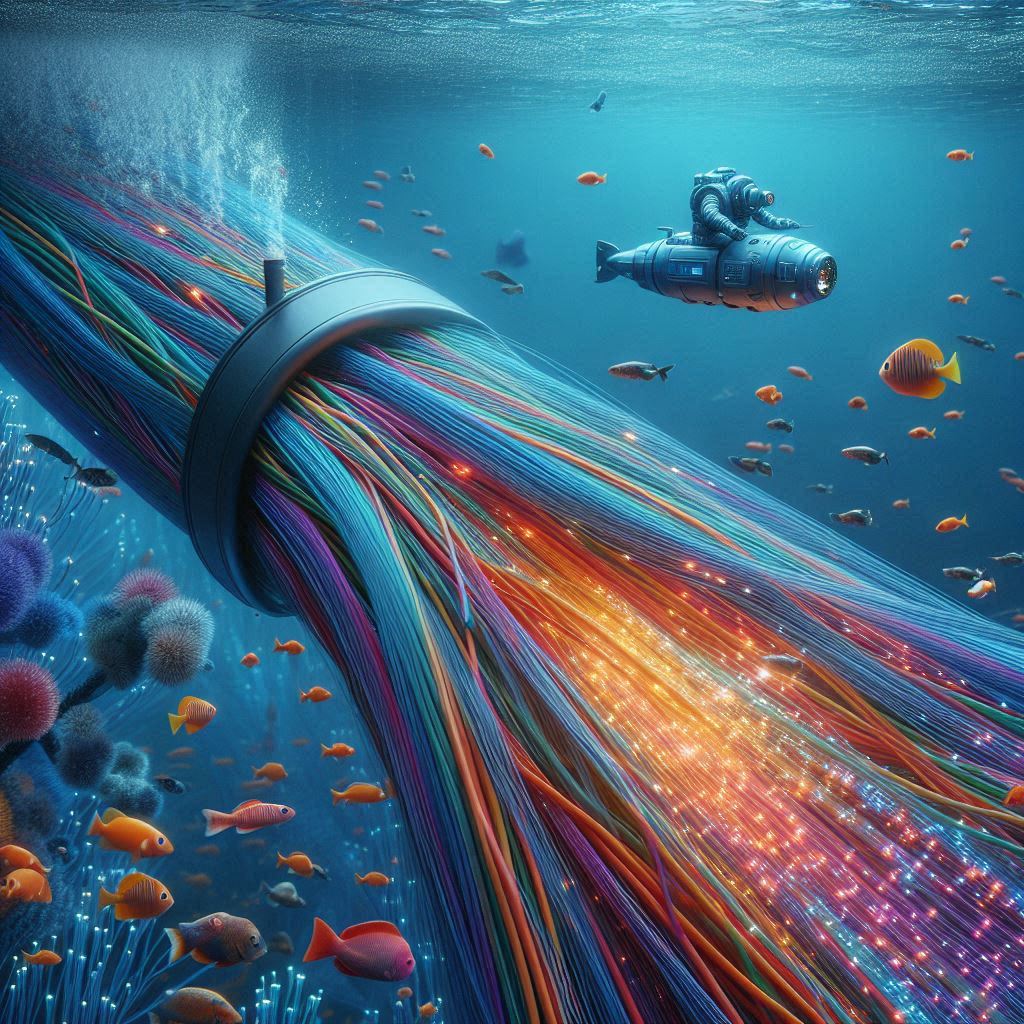In the aftermath of the global Crowdstrike outage, one question got us thinking
“What other supply chain risks could threaten our IT-dependent daily lives?”
The answer may lie beneath the waves, in the form of the very cables that connect us to the digital world.
These subsea cables form an intricate network, a vast mesh of wires lying dormant beneath the sea. They are the unsung heroes that enable us to stream live sports, attend virtual concerts, participate in online seminars, and even buy product globally and track deliveries in real time.
Despite their slender appearance, akin to a hair strand, these fibre cables are bundled and sheathed, emerging as robust as a garden hose. Coated in tar and laid by ships, the process echoes the pioneering days of the first transatlantic telegraph cable. Yet, today’s cables are technological marvels, capable of transmitting a staggering 400 terabits of data per second, as exemplified by the Amitié cable, a joint venture by tech giants including Microsoft and Meta.
While satellite links like SpaceX’s Starlink are becoming more important., subsea cables carry the bulk of the load, up to 99% of the world’s traffic. TeleGeography is an analyst firm that tracks the business, and they report on 552 existing and planned subsea cables.

But are these vital connections secure?
The sabotage of gas pipelines between Russia and Europe in 2022 raises a chilling prospect: what if undersea data cables were targeted? Taiwan, the leading producer of AI chips, has 27 undersea cables that could be at risk in the event of geopolitical tension. Russia’s Deputy head of the Security Council Dmitry Medvedev, has said these cables are fair game.
Natural disasters pose an equal threat. The recent volcanic eruption in Tonga severed most of the island’s communication lines for weeks.
Despite these risks, demand is growing.
Hyperscalers like Meta, Microsoft, Amazon, and Google drive over 60% of the traffic, with their data needs expanding by 45% to 60% annually. Their reliance on cloud services and AI necessitates robust, secure, and swift data transfer.
Yet, cables are not invulnerable. On average, every three days, one suffers damage, primarily due to fishing gear, anchors, or undersea geological activity. Hurricane Sandy in 2012 severed nearly all transatlantic connections, underscoring the potential for widespread disruption.
Repair efforts are complex and time-consuming, often hindered by bureaucratic red tape. The Fukushima earthquake of 2011 required cable repairs taking two months to complete.
What about for New Zealand?
As a small nation at the edge of the world, the stakes are high. We have three main connections.
- Southern Cross Cable Network (SCCN): This was the first international submarine connection for New Zealand.
- Tasman Global Access (TGA): This cable enhances connectivity between New Zealand and Australia.
- Hawaiki Cable: This cable connects New Zealand to the United States and Australia1.
However, efforts are underway to bolster these lifelines, ensuring that the planned Southern Cross NEXT cable and others will provide the redundancy and resilience needed for our ever-growing digital demands
